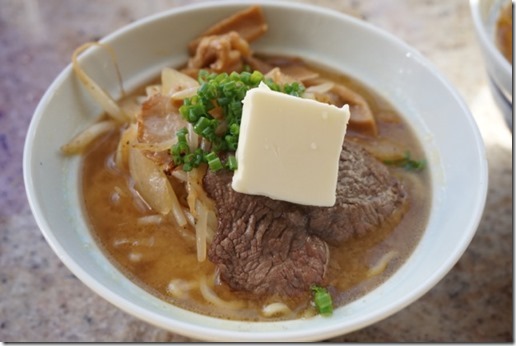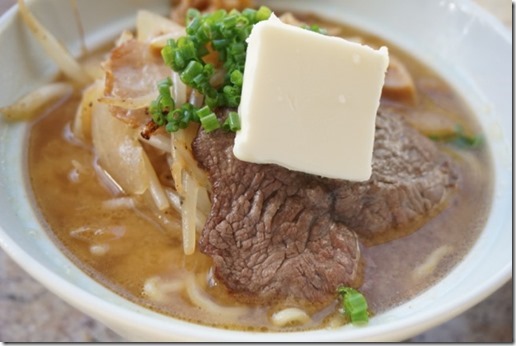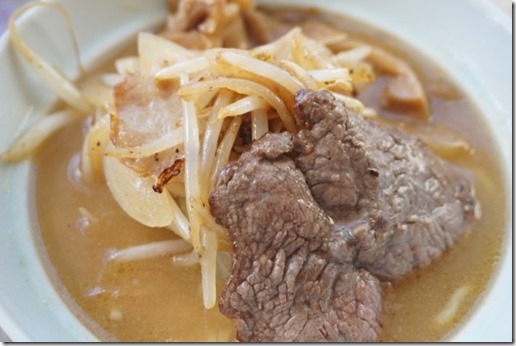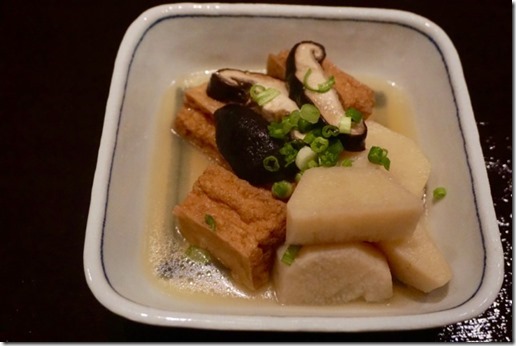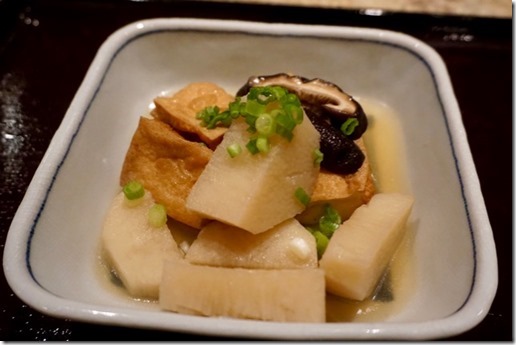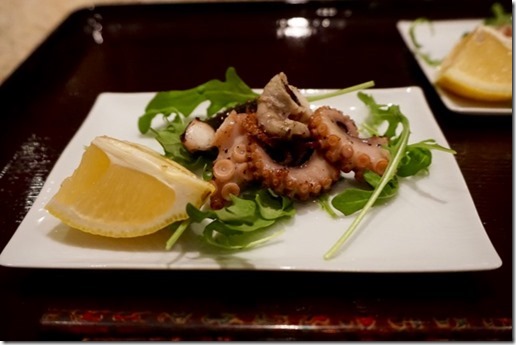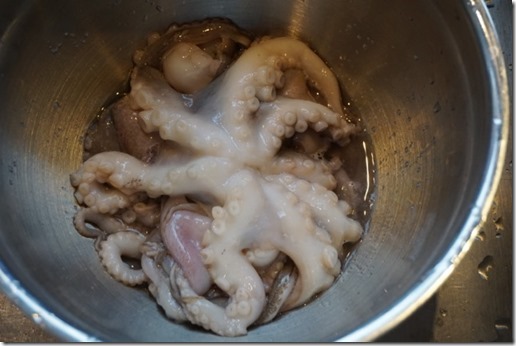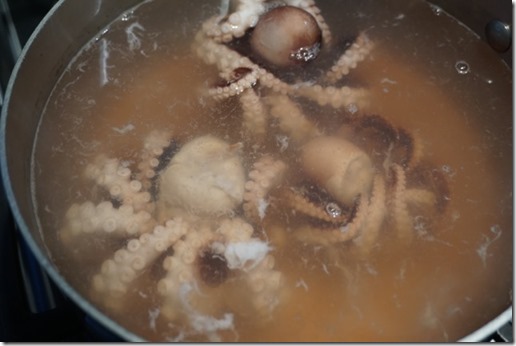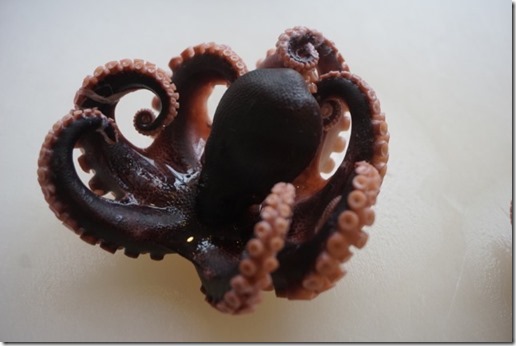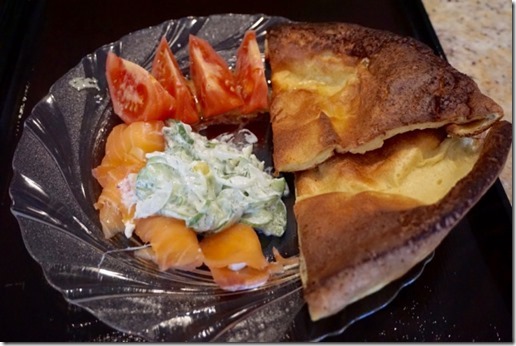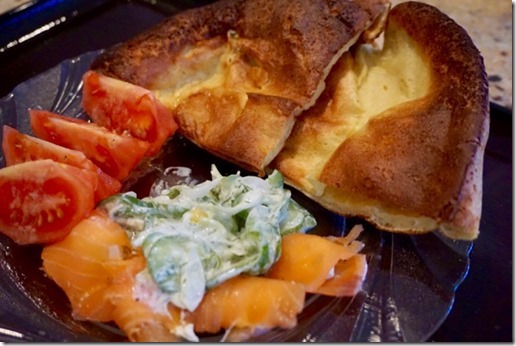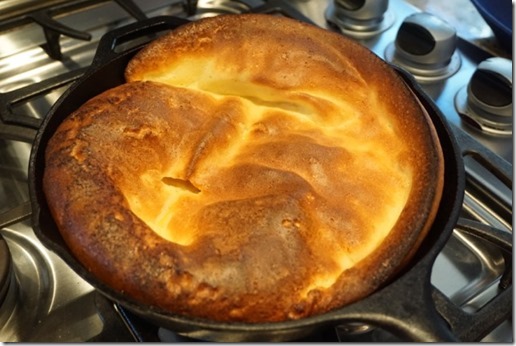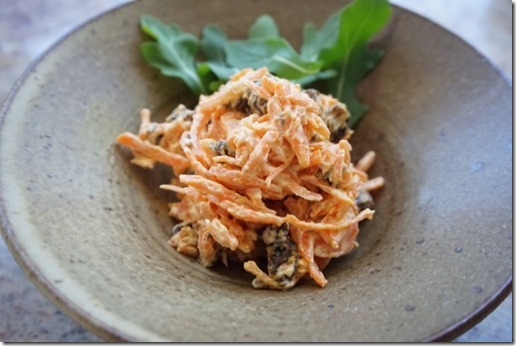
We also made some other salads. These salads are good as drinking snacks and we serve them on weekday evenings. The salads shown here are (clock wise): Indian-style carrot salad (upper left), Bulgur wheat salad, potato salad (with pickled myouga and rakkyo), cucumber onion salad with dill.
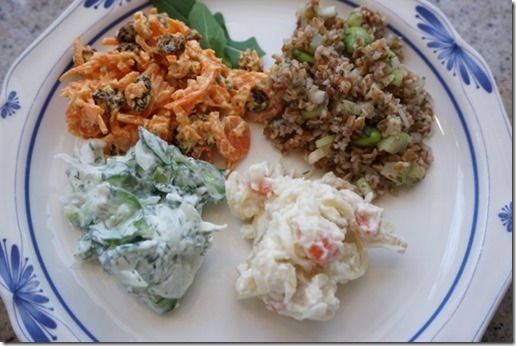
All four salads are unique with different tastes and textures. The carrot salad is the most spicy among them.
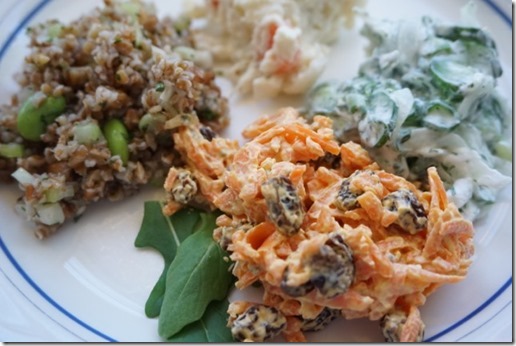
My wife was trying to get the right combination of crunchy/raw to slightly cooked texture for the carrots in this salad. She tried slicing the carrot in the food processor and decided the slices were too thick even using the thinnest blade. She tried grating the carrot in the food processor but the pieces were also a bit too big. I contributed to the project by slicing the carrot very thinly by hand as well as chopping the grated carrot into smaller pieces. She decided the grated carrot cut into smaller pieces were the best. Having made raw carrot salad before, she thought the mouth feel of totally raw grated carrot was unpleasant. So, she also lightly microwaved the grated carrot for 50 seconds to 1 minute or just until the edges were slightly softened but still crunchy. (In the picture below are mostly grated carrot briefly microwaved but also included my thinly sliced carrots which were also microwaved). This extra step really improves the texture. The carrot is still crunchy and the light cooking brings out its sweetness.

Spice mixture:
1/2 tsp salt
1/8-1/4 cayenne pepper
1/2 tsp cumin (Next time I may use less because it had a very strong cumin flavor)
1/2 tsp mustard seeds
raisins
Greek yogurt
I put some peanut oil in the frying pan and added the mustard seeds. When they began to pop I added the cumin, salt, and cayenne quickly followed by the raisins which plumped up nicely in the hot oil. Then, while still hot I added the entire mixture over the carrots and mixed well. (a word of caution: the mustard seeds start popping like Mexican Jumping Beans. Several jumped right out of the pan straight into my face. Luckily I was wearing glasses so they burned my cheek and missed my eye. Next time I may wear protective googles.)
This is the spice mixture which fried in peanut oil.

The spice mixture with hot oil was added and mixed in.

For dressing, the original recipe calls for plain yogurt but we used Greek (drained) yogurt my wife prepared.
This made a very nice salad. The spiciness was dampened and mellowed by the Greek yogurt but still had some kick and nice roasted cumin flavor. The gently cooked carrots had a very nice texture. Certainly this will join our favorite salad lineup.


